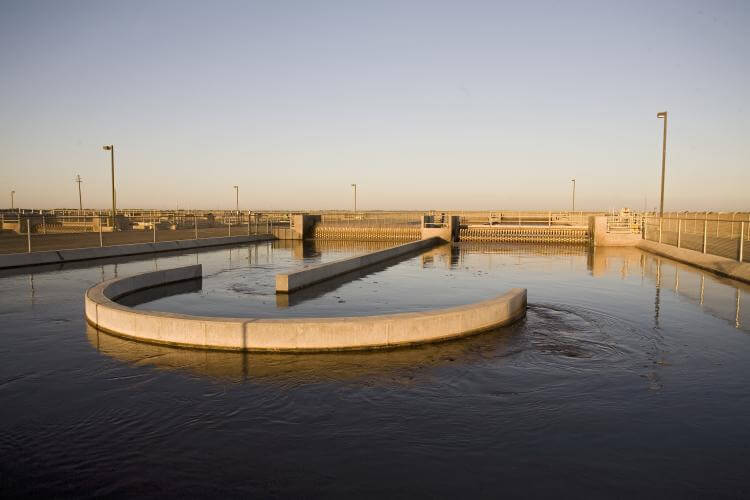
West Yost assisted the City in expanding their Wastewater Treatment Plant (WWTP) capacity from 7.8 mgd to 10.4 mgd, while also providing new tertiary treatment facilities (oxidation, coagulation, and filtration and ultraviolet (UV) disinfection of the effluent.) The project consists of an expansion of the secondary process to achieve ammonia removal to concentrations less than 2 mg/L, new tertiary facilities, and 100-year flood protection for the main portion of the treatment facility.
Specifically, the improvements consist of an expansion of the plant headworks (including an additional enclosed screw pump, a new mechanical bar screen and screenings washer, and a new aerated grit tank), an additional oxidation ditch, an additional secondary clarifier, a filter pumping station, a cloth-disk effluent filtration system, a UV disinfection system, replacement of portions of the effluent outfall, levee improvements, and related work.

To expedite construction and ensure that existing equipment is adequately matched, the City prepurchased the enclosed screw pump, the mechanical bar screen, oxidation ditch mechanical equipment, circular secondary clarifier mechanical equipment, the cloth-disc filtration system, and the UV disinfection equipment. Also, to meet the initial schedule requirements permits for the disposal of construction dewatering water were obtained during the design phase. The UV disinfection system for the City provides 15.6 mgd peak-hour capacity.
The system includes:
- Dual channels
- Low-pressure, high-output lamps
- Flow measurement and control via Parshall flumes in advance of each channel
- Continuous on-line UV intensity and transmissivity monitoring with centralized PLC control
- In-channel lamp cleaning using a hydraulically-driven wiper system
- Provisions for a separate cleaning tank, if needed
- Overhead crane system for UV lamp rack removal
- A canopy to provide shading and rain protection
Continuous operation of any treatment plant undergoing construction activities is always a concern. The construction of these work elements were dispersed throughout the plant and included a number of complicated connections and cross-overs. Wastewater was stored in the plant ponds during part of the construction period, and detailed construction sequencing was developed to allow the plant to remain in operation during the construction of the new improvements.

